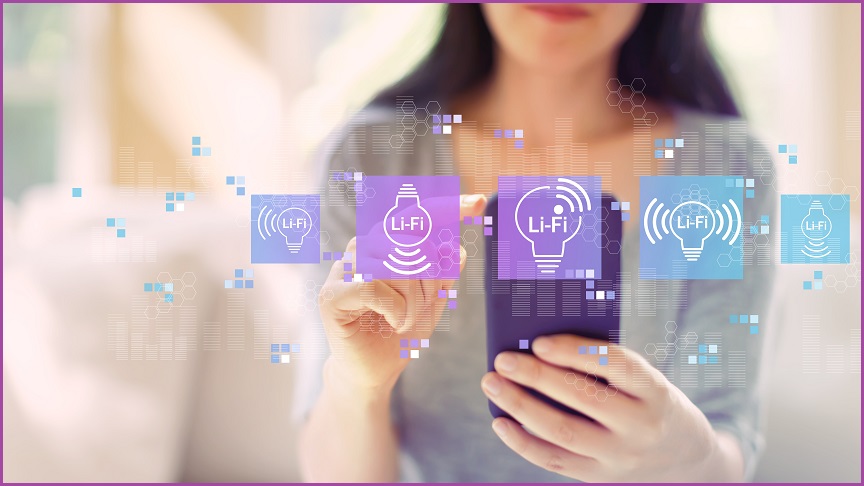A newly approved line-of-sight networking standard allows devices to transfer data at blistering speed using a technique akin to repeatedly flipping a light switch on and off – but it only works as long as they’re in the same room, with nobody standing between them.
Having been in development since 2018, the new ‘Li-Fi’ standard – officially designated as 802.11bb by standards body the Institute of Electrical and Electronics Engineers (IEEE) – formalises an approach by which devices transmit data using infrared light.
The light pulses – which sit in the 800nm to 1000nm wavelength band and cannot be seen by the human eye – can carry data at anywhere from 10Mbps to 9.6Gbps, making the data transmission method as fast as the new Wi-Fi 6 standard (officially known as 802.11ax).
Li-Fi is a line-of-sight protocol, meaning that it only works for devices that are physically near each other and have an unobstructed view of each other – crucial, since infrared light does not penetrate objects and data flow can be interrupted if someone so much as waves their hand through the beam.
That property also makes the new technology highly secure, since it cannot be intercepted without interrupting the flow of data.
Because it is not accessible through walls and over a wide area, it cannot become congested, interfered with by outside factors, or hacked by an unauthorised user sitting within range of the Wi-Fi base station.
And while it can be physically blocked, Li-Fi doesn’t suffer from interference from nearby sources such as microwaves – making it particularly valuable in office or industrial applications where interference can compromise Wi-Fi speeds or block connections altogether.
It works over a distance of a few metres, effectively making it a localised, directional version of Wi-Fi – which is how proponents envision it will become used going forward.
The standard’s release is “a significant moment for the wireless communications industry,” said Nikola Serafimovski, chair of the 802.11bb Task Group and vice president of standardisation with pureLiFi, which worked with Fraunhofer HHI to develop and finalise the standard.
The ability to transmit data in a new way has garnered widespread support from mobile phone makers and semiconductor companies, he said, to provide “what the industry needs to adopt Li-Fi at scale”.
Bringing Li-Fi to the world
Transmitting information using bursts of light is nothing new – ships have used lanterns to communicate for time immemorial, with Morse code standardised to enable the transmission of text using light or electrical pulses – but Li-Fi modernises the technique by adding it to the 802.11 family of data standards, which also includes the ubiquitous Wi-Fi.
Ratification of a formal standard gives manufacturers a common language to integrate Li-Fi capabilities into their products – and part makers like pureLiFi are already spruiking the options, with its Light Antenna ONE already available to device makers.
Built into a mobile phone or laptop, for example, the device would allow two devices to securely share data at speeds far faster than Wi-Fi, simply by pointing them at each other.
Two computers could directly connect across the room, or a network could be extended between nearby buildings simply by adding Li-Fi-capable devices on each side of the gap.
“Li-Fi can replace cables by short-range optical wireless links and connect numerous sensors and actuators to the Internet,” noted Volker Jungnickel, a researcher at Fraunhofer HHI and technical editor of the IEEE task group.
“This is essential for the development of new and innovative applications…. We believe that this will create a future mass market.”










